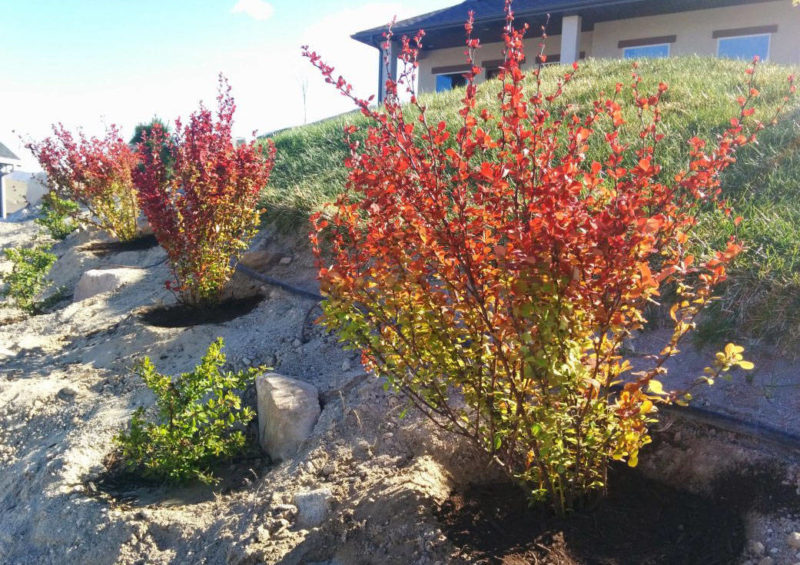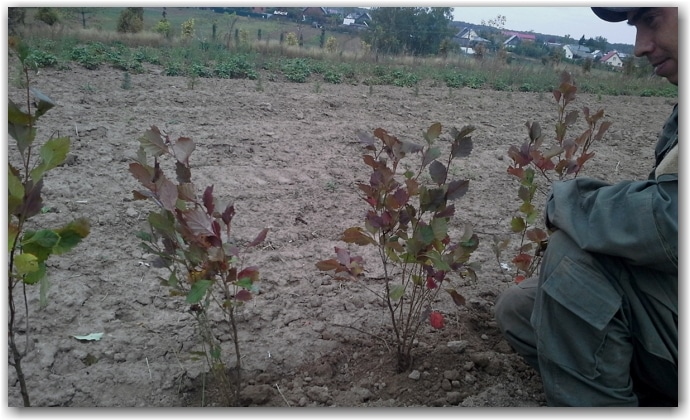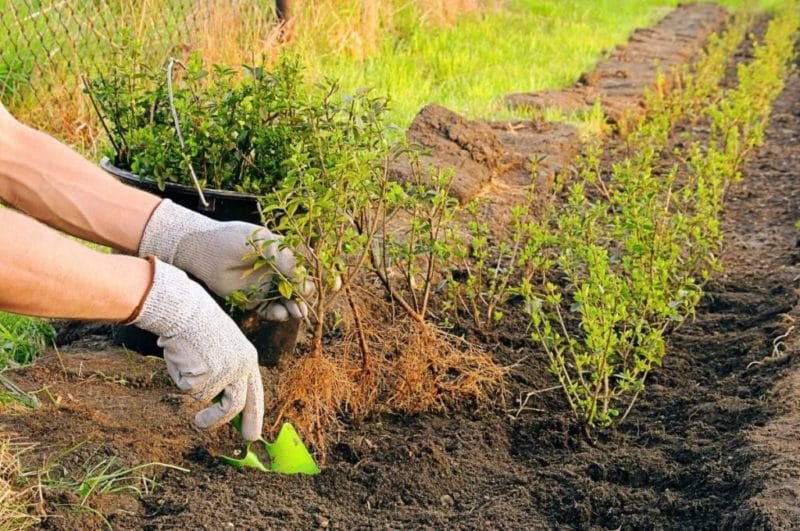Instructions for novice gardeners: planting barberry from A to Z
Barberry stands out from other shrubs due to its decorativeness, ability to blend organically into any composition, and ease of care. Bright foliage attracts attention and transforms the garden plot. In this article we will talk about planting barberry from A to Z and the features of caring for the bushes.
Features of barberry and rules for planting it

Barberry - an ornamental plant from the genus of shrubs, the Barberry family. In the wild, the culture is widespread in mountainous areas. There are 170 plant species, some of them are grown in garden plots and are also used in landscape design.
For gardeners, barberry is of interest primarily as a raw material base for the production of juices, jams, sauces, and medicinal tinctures. The decorative qualities of the crop are expressed in the variety of leaf colors: yellow, green, purple, carmine red, variegated, spotted.
The table shows suitable and unsuitable conditions for growing shrubs. The information will be useful for novice gardeners.
| Conditions | Fits | Doesn't fit |
| Soil moisture | Deep groundwater. | Swampy, too wet areas. |
| Illumination | The more sun, the brighter the leaves, the better the bushes grow, the sweeter the fruits. | In dark places, the plant loses its decorative effect, the leaves acquire a faded green color, the fruits grow worse, and the plant develops more slowly.However, in the shade the root system develops more actively, which allows the bush to be propagated by division. Gardeners often practice temporary planting in the shade for this very purpose. |
| Winds | Quiet area protected by a fence, outbuildings and other plants. | Open area with drafts. |
| Rockiness | Rocks with a small turf layer, pebble river areas, fertile breathable soil, loam. | Clogged clay soil. The problem can be easily solved with the help of river sand and careful loosening. |
| Soil acidity | Normal (pH = 7), slightly acidic (pH = 6-4), slightly alkaline (pH = 7-8) | Alkaline (pH ≤ 8) |
When is the best time to plant

Barberries are traditionally planted in spring or autumn. Experienced gardeners practice autumn planting so that the bushes have time to take root in a new place. A plant planted in spring spends a lot of energy growing roots and flowering at the same time. A decrease in growth rate is often observed. However, if you did not find suitable planting material in the fall or did not have time to prepare it, do not worry, carry out planting work in the spring.
If possible, select seedlings with a clod of earth. Its young roots are protected by the soil, so it will take root on the site without problems.
Reference. Seedlings with a closed root system are planted in spring, summer and autumn.
Nuances for different regions
We have already figured out where to plant barberry. Now let's move on to the issue of planting crops in different regions.
Spring planting of barberry is carried out as soon as above-zero temperatures are established, regardless of the region. This is the same rule for all areas.
In the Moscow region, Leningrad region, the Urals and Siberia, barberry is planted in the second ten days of April or in late September - early October, before the first frost.The plant will have time to take root in a new place and survive the winter without loss.
In the south of Russia, spring planting is carried out in March, and autumn planting is carried out in late October - early November.
What is needed to plant Barberry
To plant barberry you need to prepare:
- tools - shovel, rake, hoe;
- drainage to the bottom of the pit - broken brick, crushed stone;
- nutritious soil mixture for filling the hole;
- clean water for watering the seedling and tree trunk;
- mulch - hay, straw, sawdust, peat.
Soil preparation
Barberry grows best in neutral or slightly acidic soil. It is also important to comply with the planting conditions described in the table at the beginning of the article.
Alkaline soil is limed before planting: 8-10 kg of humus and garden soil, 100 g of superphosphate, 400 g of lime, 200 g of wood ash are poured into the planting hole.
To prepare a nutrient substrate, 10 liters of humus or compost are mixed with the same amount of peat and potassium phosphate and turf is added.
Reference. Superphosphate, potassium sulfate, diammophoska (in autumn) or nitroammophoska (in spring) are also used as a nutrient component of the soil mixture.
Instead of mineral fertilizers, you can add organic matter - wood ash and bone meal.
The substrate is thoroughly mixed and poured into the planting hole.
Selection and preparation of planting material
When choosing a seedling, pay attention to the condition of the branches, leaves and root system.
The central root of a seedling with an open root system should be developed, powerful, with additional adventitious roots.
The most reliable way to buy seedlings is:
- with a closed root system;
- in containers with soil mixture;
- in nurseries and garden centers.
How to plant barberry correctly - step-by-step instructions

Barberry planting technology:
- For each seedling, a depression is prepared if a single planting is planned, or a trench for creating a hedge of bushes. The dimensions of the recess are selected in accordance with the size of the root system, as well as taking into account the drainage layer.
- Drainage is placed at the bottom of the hole to remove excess moisture from the roots of the plant. Sprinkle ready-made soil mixture from a garden store on top or make it yourself.
- Before placing the seedling, a peg is driven into the hole to support the young bush.
- The seedling is carefully placed in the hole, the roots are straightened and watered.
- The pit is filled with a nutrient substrate and gently compacted. The root collar is left 3–4 cm above the ground surface.
- The tree trunk circle is watered with settled water and covered with mulch.
Barberry planting scheme
The distance from other plants is calculated depending on the purpose of planting barberry and its variety.
Single planting in the country is carried out at a distance of 2-3 m from other plants. Decorative barberry thunberg planted every 1-1.5 m.
A hedge is formed by planting bushes at a distance of 30-40 cm. Bushes can also be placed in a checkerboard pattern for decoration.
The standard parameters of the planting hole (depth and width) are 50x50 cm. The hole for seedlings with a closed root system should be 2-3 times larger.
Drainage is placed at the bottom of the hole, then half filled with nutrient substrate.
Care after landing
Caring for barberry after planting is easy. The culture is unpretentious and requires a minimum of attention.
In the first year after planting, the plants are watered once a week. You can also organize an automatic irrigation system on the territory if it is not possible to come to the site often, or plant a drought-resistant variety (Thunberg, Amursky). 2–3 years after planting, barberry is watered only during drought.
The shape of the bushes is maintained by cutting. Sanitary pruning is carried out in mid-July - early August: frozen, dead, damaged, dry branches are removed. Cosmetic haircuts are carried out as shoots that have become out of shape grow back.
Thunberg barberry grows slowly, which allows you to create complex geometric compositions and trim it much less frequently compared to other varieties.
Feeding begins from the second year. In the spring, the plant is fertilized with potassium and nitrogen (20–30 g of urea per 10 liters of water), and in the fall with phosphorus (25 g per 10 liters). The procedure is repeated after 4–5 years. It is impossible to fertilize barberry more than 2 times a year. An excess of nutrients is dangerous for the plant, as is a deficiency.
Common barberry is winter-hardy and tolerates frosts down to -25°C. However, Thunberg's barberry, which is accustomed to the mild climate of Japan, will have to be protected from frost. The bushes are wrapped in non-woven material (agrofibre, greenhouse geotextile), covered with spruce branches, tarpaulin, and straw.
Barberry has a strong immune system and rarely gets sick. At the same time, gardeners recommend not to neglect prevention and treat the bushes with Bordeaux mixture.
The table shows typical barberry diseases and methods of combating them.
| Diseases and pests | Signs | Treatment |
| Powdery mildew | Whitish spots on the leaves during prolonged rains. | 20 g of “Fundazol” per 10 liters of water. |
| spotting, leaf rust |
Light, dark or reddish spots | Spraying the crown with fungicides, 1% solution of Bordeaux mixture. |
| Aphids, sawfly, flower moth | Holes on the leaves, sticky coating, colonies of insects on the back of the leaf. | Spraying with systemic insecticides (Aktelik, Horus), 0.2% Fitoverma solution. |
Advice from experienced gardeners
Take advice from experienced gardeners:
- Plant bushes in open areas or in partial shade. The level of lighting affects the brightness of the leaves: the more sun, the richer the color.
- Barberry does not like excess moisture. Plant the plant in higher elevations or make an earthen mound to prevent rotting of the root system.
- The soil must be alkaline. To normalize the pH, add lime.
- Mix clay soil with river sand for additional aeration.
- Line the bottom of the pit with broken bricks, pebbles, and crushed stone to prevent water stagnation.
- Leave the root collar above the soil surface.
- After planting, compact the soil to prevent air pockets.
Conclusion
Barberry is an ornamental crop that can transform any area. Even novice gardeners do not have problems with planting bushes. The best place for barberry growth is a illuminated area on a hill, without drafts, with low groundwater levels. Planting is carried out in the spring, as soon as above-zero temperatures are established, or in the fall, before the first frost.
Caring for the plant is not burdensome; it is enough to monitor the moisture level, apply fertilizing, carry out sanitary and cosmetic pruning, and also cover the bushes for the winter.
Great recommendations! Everything is clear, precise and understandable. Thank you.